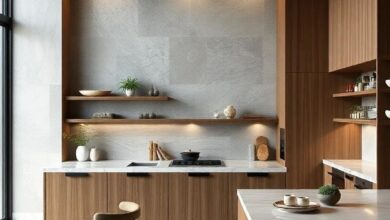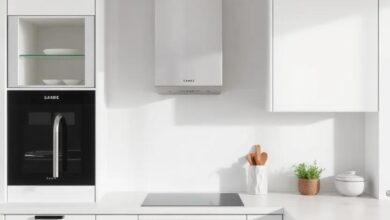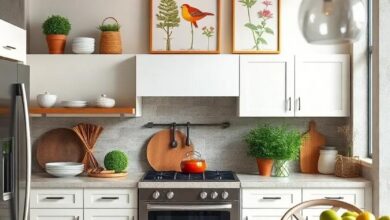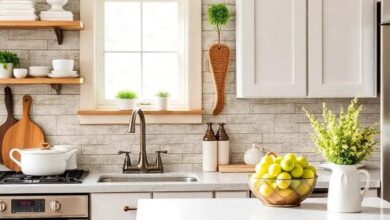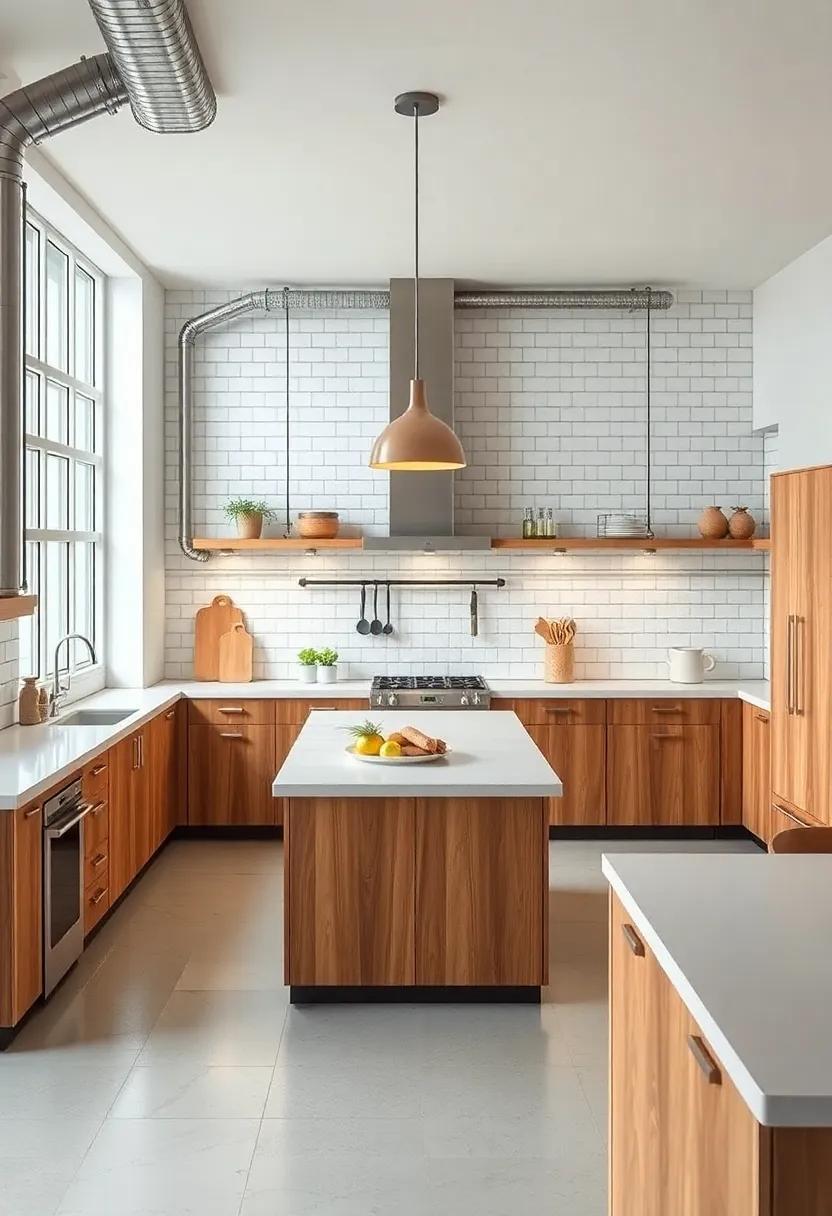
Crafting Efficiency: A Comprehensive Guide to Industrial Kitchen Layouts
In the bustling heart of a restaurant, where the rhythmic clatter of pans and the aromatic symphony of sizzling ingredients converge, the kitchen stands as the epicenter of culinary creativity and operational efficiency. Yet, behind the scenes, the true magic often lies not just in the skill of the chefs but in the thoughtful design of the kitchen itself. “” delves into the art and science of kitchen design, illuminating how smart layouts can enhance workflow, boost productivity, and ultimately elevate the dining experience. Whether you are an aspiring chef, a seasoned restaurateur, or a kitchen designer, understanding the nuances of industrial kitchen layouts can empower you to create spaces that aren’t just functional, but also foster culinary innovation. Join us as we explore various layouts, key considerations, and best practices that will help you transform your kitchen into a well-oiled machine, ready to serve up culinary masterpieces with both style and efficiency.
Optimizing space Utilization through Strategic Layouts in Industrial Kitchens
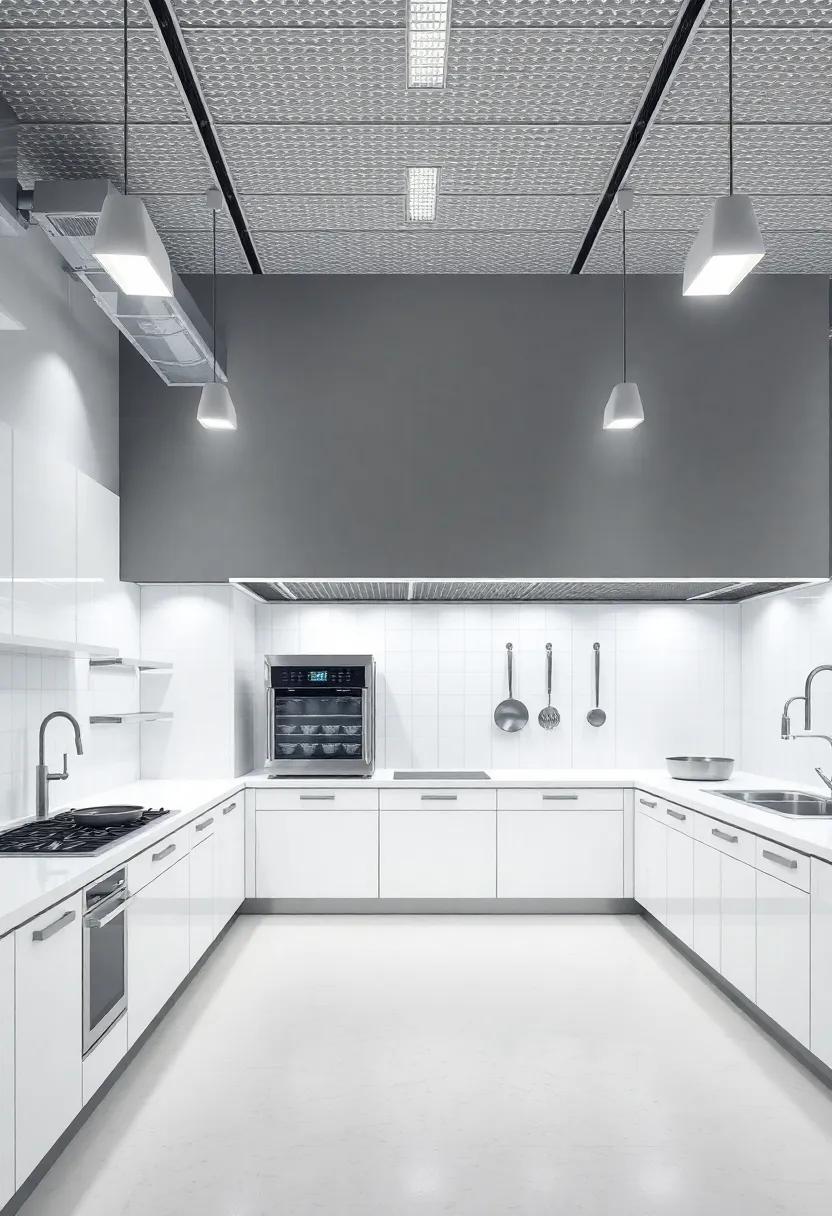
Effective space utilization is a cornerstone of any industrial kitchenS operational efficiency. By implementing strategic layouts, kitchens can streamline workflows while maximizing available square footage. Key aspects to consider in layout optimization include the following:
- Work Zones: Design distinct zones for storage, planning, cooking, and service to reduce movement and time waste.
- Equipment Placement: Position heavy equipment near utility access and lighter tools close to prep areas for ease of use.
- Ergonomics: Ensure that work surfaces are at comfortable heights to minimize strain on staff and promote productivity.
- Traffic Flow: Plan for logical pathways that allow personnel to move freely without crossing into high-traffic zones.
Implementing a well-thoght-out layout not only enhances efficiency but also contributes to the overall safety and comfort of the kitchen surroundings. A balance between accessibility and organization is paramount. Consider using the following table to prioritize the elements essential for layout functionality:
| Layout Element | Importance Level |
|---|---|
| Space for Storage | High |
| Workflow Optimization | High |
| Employee Comfort | Medium |
| Safety Regulations | High |
For more insights into kitchen layouts and best practices, you can visit FDA.
Elevating Workflow Efficiency by Analyzing Kitchen Zones and Stations
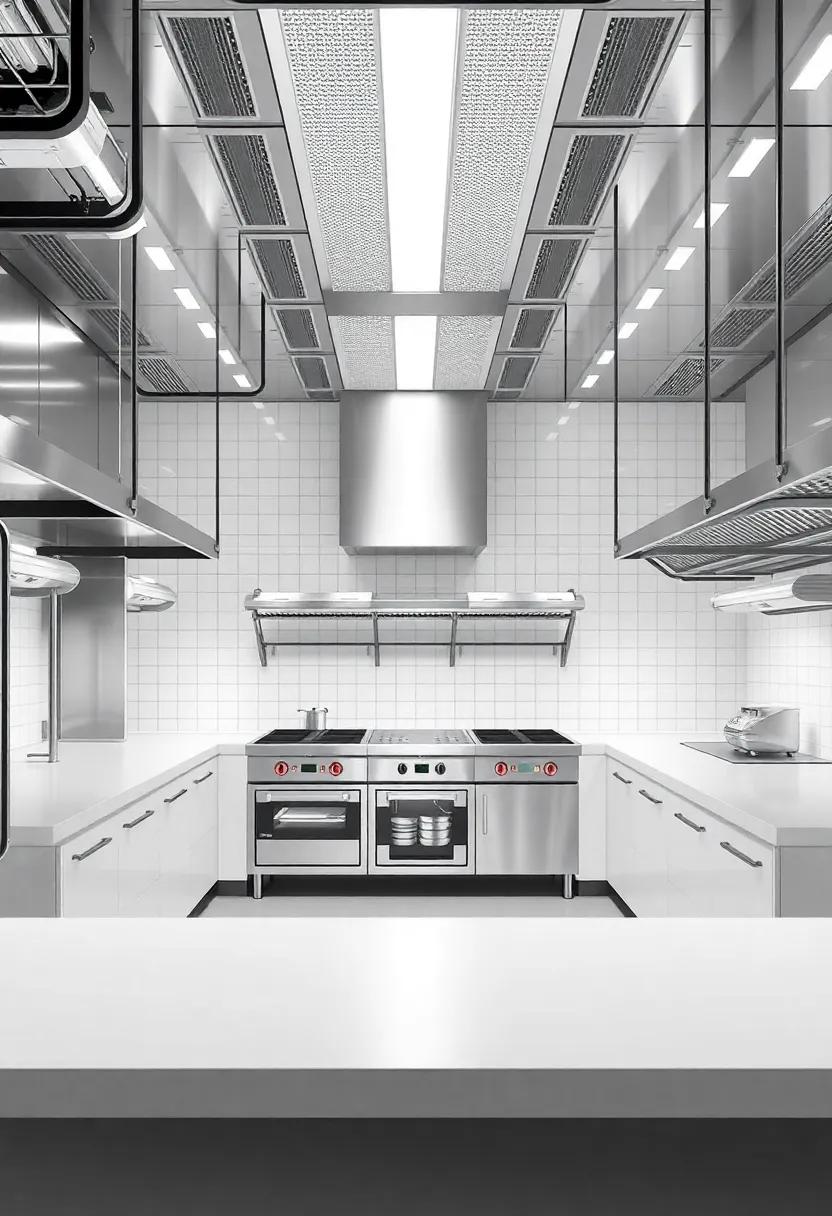
To effectively elevate workflow efficiency in an industrial kitchen, it’s essential to analyze the various zones and stations dedicated to specific tasks. Each area, from food prep to cooking and plating, must be strategically designed to minimize movement and reduce bottlenecks. By mapping out the flow of ingredients and personnel, kitchens can adopt layouts that support the natural progression of meal preparation. This includes ensuring that all necessary equipment, tools, and ingredients are within easy reach at each station, thereby enhancing productivity and reducing staff fatigue.
When implementing these strategies, consider the following aspects to optimize efficiency:
- Workstations Configuration: Arrange stations in a logical sequence from prep to plating.
- Storage Solutions: Use vertical space and mobile storage options to keep frequently used items nearby.
- Staff Roles: Clearly define roles for each station to streamline responsibilities and improve task flow.
Creating a flexible and cohesive workspace not only improves team collaboration but also elevates food quality and speed of service. For more detailed kitchen design insights,refer to Kitchen and Bath Design, where you can explore innovative ideas tailored to your specific requirements.
Integrating Modern Technology for Enhanced Kitchen Performance
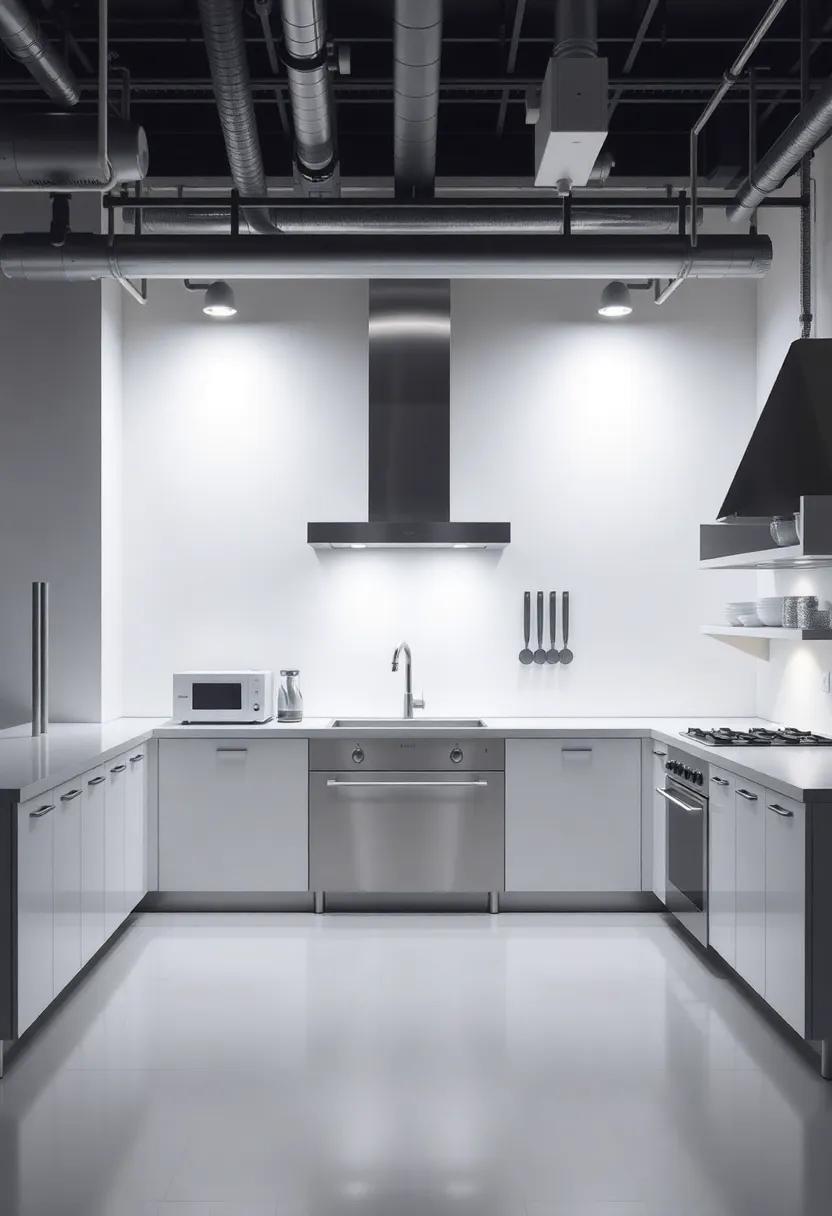
in the rapidly evolving culinary world, the integration of modern technology plays a pivotal role in streamlining operations and maximizing kitchen efficiency. Embracing tools such as smart ovens, automated cooking systems, and inventory management software can vastly improve workflow. By utilizing devices that connect to central servers, chefs can monitor cooking processes, track ingredient usage in real time, and adjust recipes on-the-fly, ensuring consistency and quality. Investing in such technology not only reduces human error but also enhances the overall dining experience by maintaining the high standards expected by guests.
Furthermore,the implementation of advanced kitchen display systems (KDS) can revolutionize communication between the front-of-house and back-of-house teams.With these visual aids, orders can be transmitted directly to the kitchen, displayed in a clear format, and prioritized based on dine-in versus take-out demands. Additionally, integrating cloud-based analytics allows kitchen managers to assess performance metrics and identify bottlenecks regularly. This data-driven approach enables proactive adjustments in real time,ultimately leading to improved service and satisfied customers. To explore more on kitchen technology innovations, visit kitchenaid.com.
designing for Safety: Creating a Secure Environment in Industrial Cookspaces
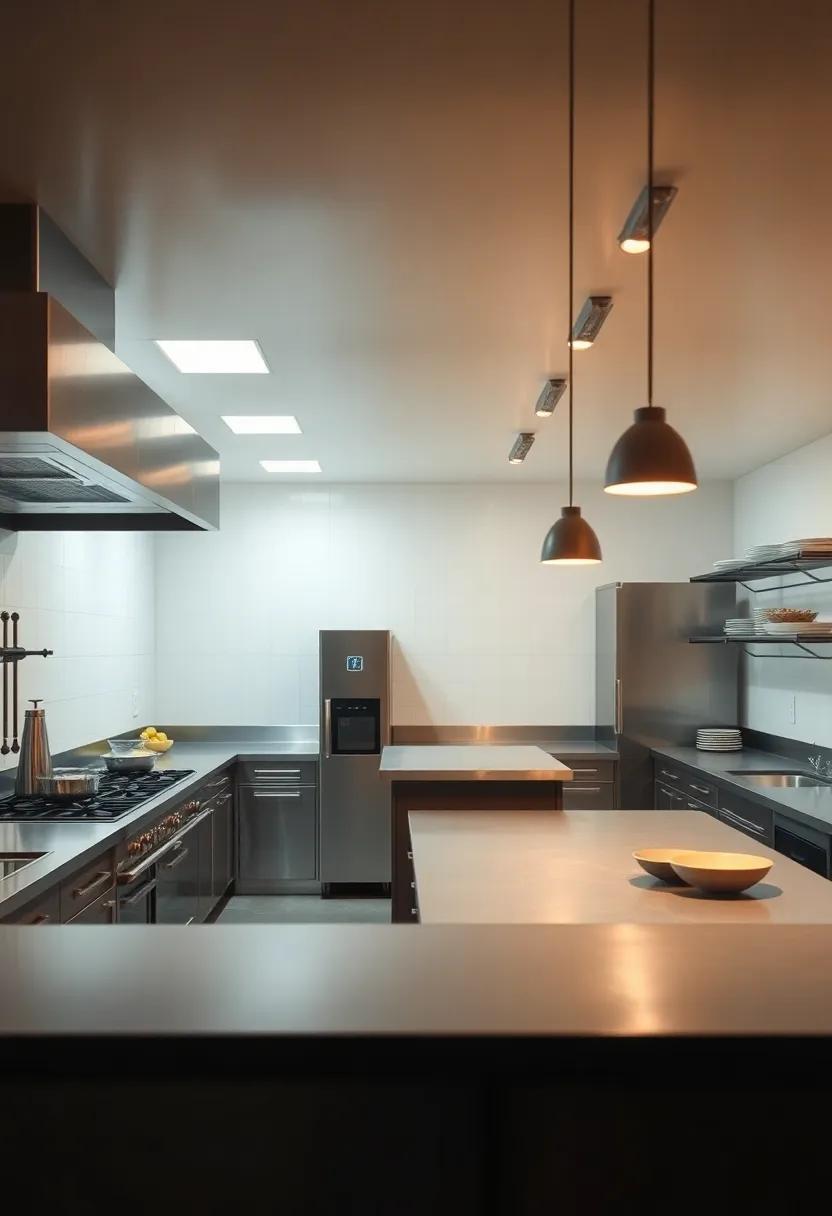
In the bustling heart of an industrial kitchen, safeguarding personnel and clients is paramount. Designing for safety involves meticulous planning and an understanding of potential hazards within the workspace.Key considerations include the layout of cookspaces, wich should prioritize effective workflows while reducing cross-contamination risks. By incorporating non-slip flooring, adequate ventilation, and strategically placed fire suppression systems, a safer kitchen environment can be created. Moreover, it is essential to use color-coded cutting boards and visual cues that guide employees on safe food handling practices, minimizing the chance of accidents.
Moreover, integrating ergonomic elements into kitchen design promotes not only operational efficiency but also the well-being of staff. Features such as height-adjustable prep tables, easy-access storage, and sufficient task lighting can significantly reduce the risk of injuries associated with repetitive motions and poor visibility. Regular training sessions on safety protocols and kitchen ergonomics further enhance awareness among staff, fostering a culture of safety. To reinforce these concepts, embracing regulations from trusted sources such as the Occupational Safety and Health Administration ensures that the kitchen meets essential safety standards.
Incorporating Sustainable Practices in Kitchen Design and Operations
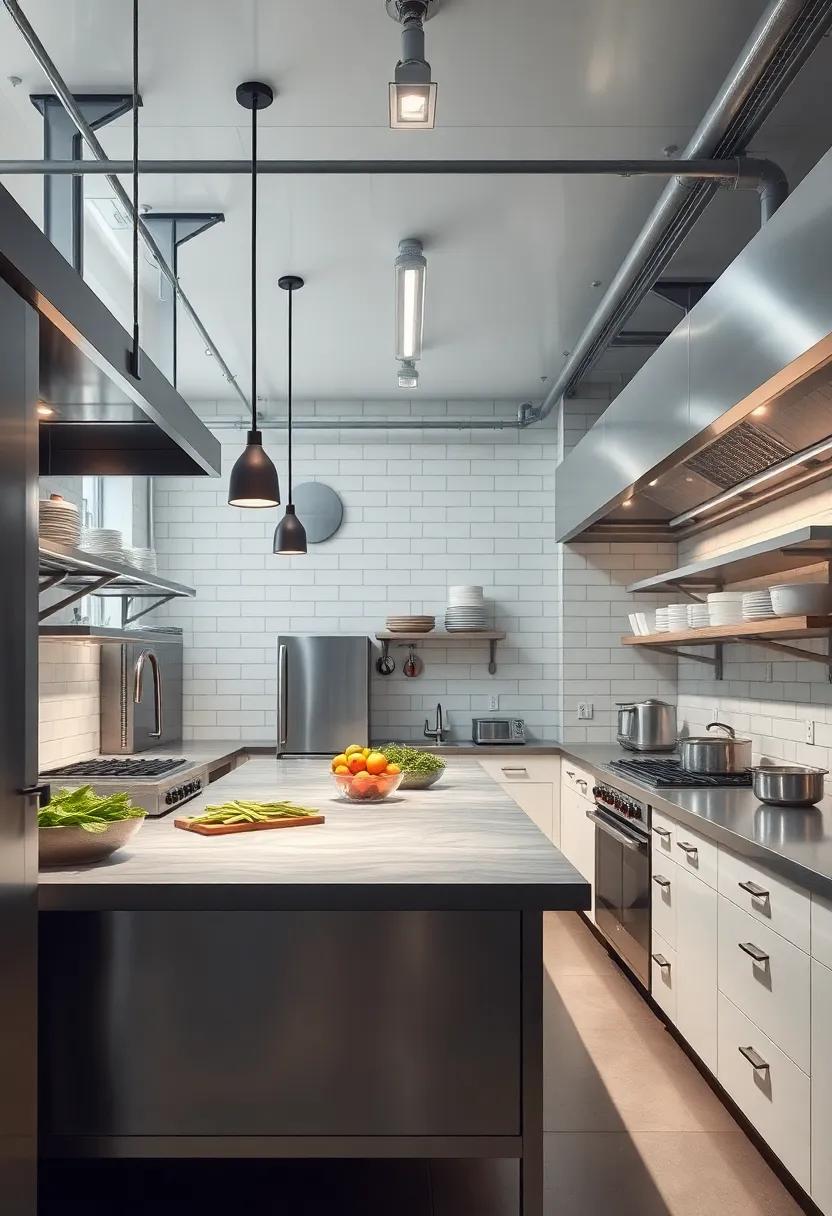
Designing an industrial kitchen with sustainability in mind begins with the choice of materials and the flow of operations. Utilizing recycled or eco-kind materials for countertops, cabinets, and flooring not only reduces waste but also promotes a healthier kitchen environment. Furthermore, integrating products with low VOC (volatile organic compounds) emissions can significantly improve indoor air quality. it is essential to consider the layout efficiency; a linear or zone-style design minimizes unnecessary movement, thus conserving energy and fostering a streamlined cooking process. Employing energy-efficient appliances such as induction cooktops and commercial ovens that meet ENERGY STAR ratings can yield significant reductions in energy consumption over time.
In addition to choosing sustainable materials and appliances, operational practices play a crucial role in minimizing environmental impact. Implementing a waste management system that includes composting organic waste and recycling materials can reduce landfill contributions. Staff training on food conservation techniques—like utilizing seasonal and local produce—can enhance the freshness of meals while lowering transportation emissions. To truly embody sustainability, many kitchens are also adopting water-saving technologies, such as low-flow faucets and dishwashers that reduce water usage without compromising cleanliness. By focusing on these practices, industrial kitchens can transform into models of efficiency and sustainability for the culinary industry. For more insights on sustainable kitchen designs, visit greenbuildingadvisor.com.
Utilizing Ergonomics to Minimize Strain in kitchen Workflows
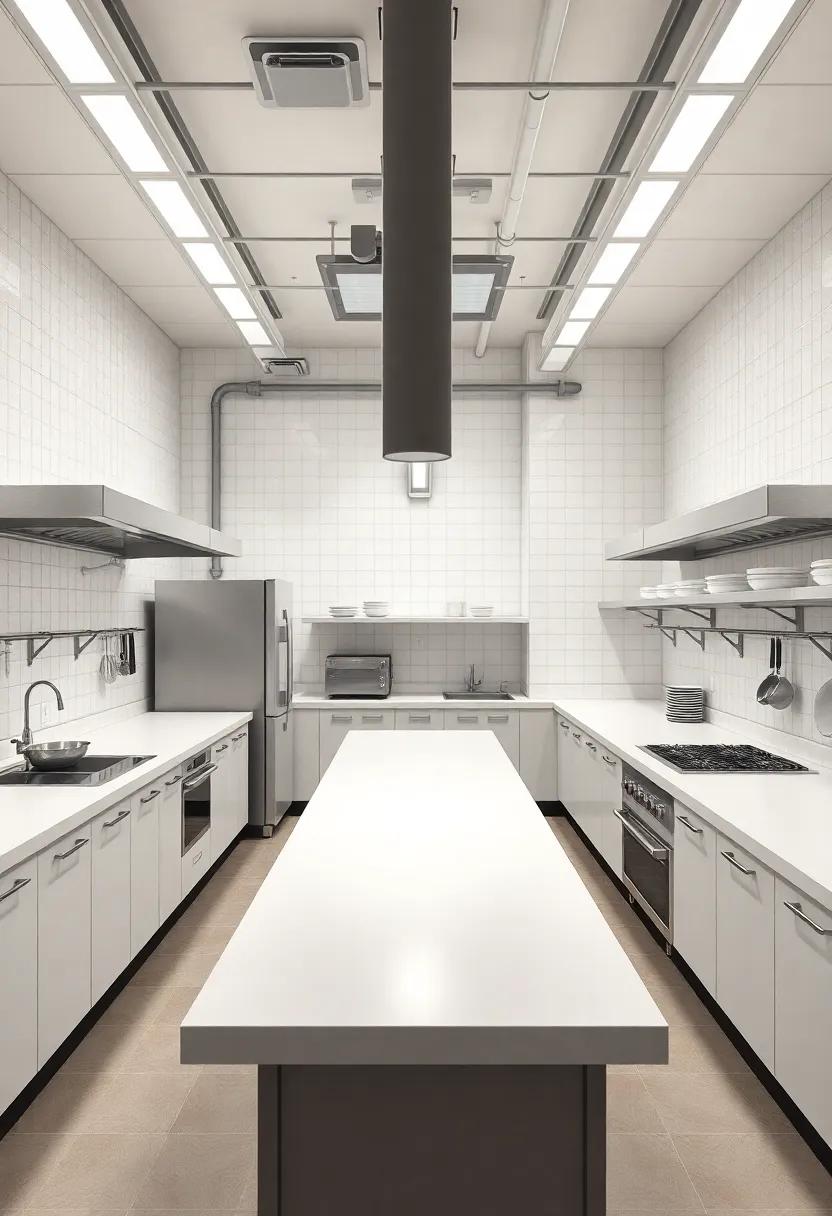
In the bustling environment of an industrial kitchen, the importance of ergonomics cannot be overstated. By strategically designing workflows and station layouts, kitchens can significantly reduce physical strain on staff, promoting better health and productivity. This involves positioning equipment and tools within easy reach to minimize excessive bending, stretching, or twisting. Key aspects to consider include:
- Worksurface Height: Adjusting counter heights to suit the average user can prevent back strain.
- Tool Placement: Keeping frequently used items at waist level helps avoid repetitive strain injuries.
- Efficient Workflow Mapping: Planning a logical sequence of workstations can streamline operations and reduce unnecessary movement.
additionally, incorporating adjustable equipment can offer adaptability for various tasks. For example, utilizing adjustable-height prep tables allows for a greater range of motion, accommodating chefs of different heights and creating a more comfortable working environment. Consider the following elements to enhance ergonomic benefits:
| Element | Description |
|---|---|
| Non-slip Mats | Reduces fatigue while standing for long periods. |
| Rolling Carts | facilitates easy transport of ingredients and tools. |
| Ergonomic Tools | Designed to minimize strain on hands and wrists. |
By applying these principles, kitchens not only enhance the comfort and well-being of their employees but can also improve overall efficiency, resulting in a more harmonious workplace. For further reading on ergonomic practices, visit ergonomics.org.
Harnessing Proper Ventilation to Promote a Healthier Cooking Environment
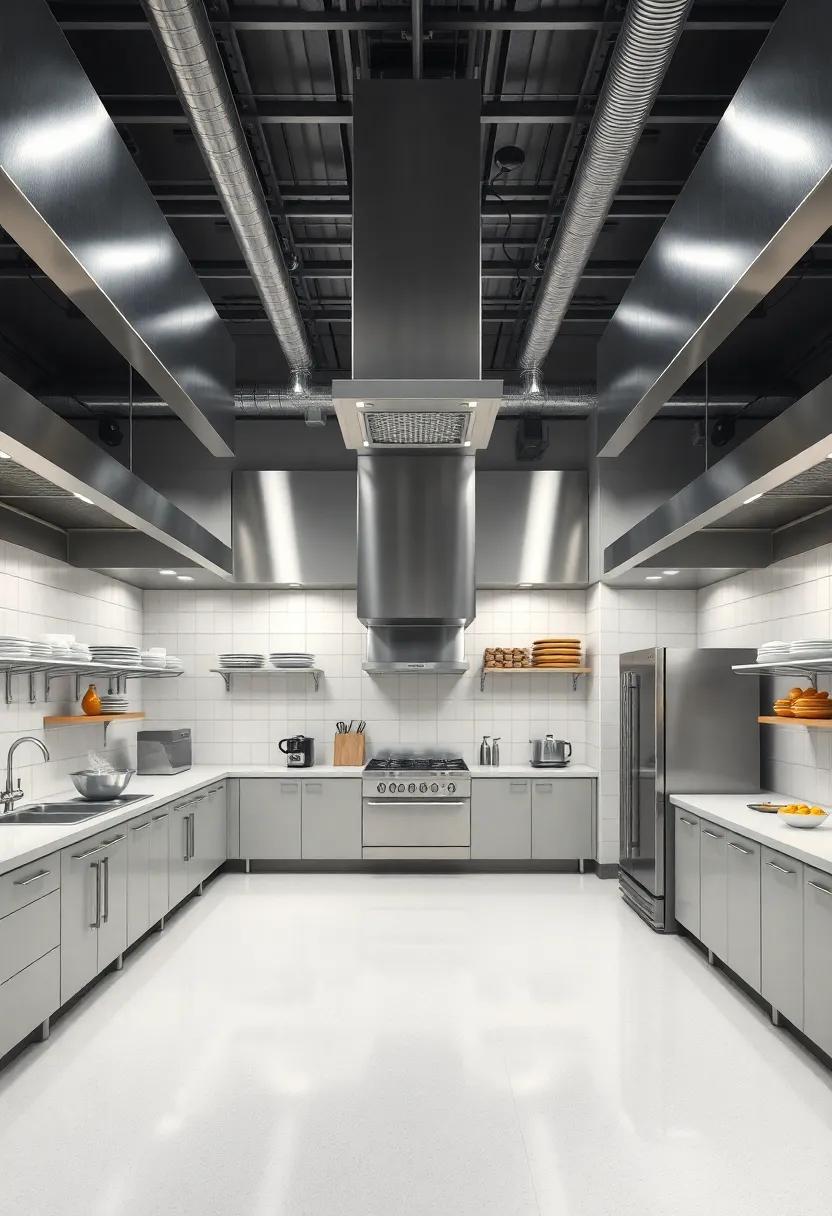
In any industrial kitchen, achieving a balanced atmosphere through effective ventilation is paramount. Proper airflow not only removes heat and moisture generated during cooking but also mitigates the accumulation of harmful fumes and odors. A well-designed ventilation system enhances the comfort of kitchen staff, reducing fatigue and allowing them to maintain focus on their culinary tasks.The ideal setup includes a combination of exhaust hoods and make-up air systems that uniformly circulate air, ensuring a consistent and refreshing working environment.
When planning the layout, consider implementing features like:
- Variable Speed Fans: Enabling adjustments based on kitchen activity levels.
- Grease Filters: capturing airborne particles to maintain air quality.
- Airflow Monitors: Keeping track of air changes to optimize efficiency.
A well-structured ventilation strategy contributes to not just operational efficiency but also compliance with health regulations. Potential issues arising from poor air circulation can lead to safety hazards and decreased food quality. Resources like FSIS provide extensive guidance on maintaining health standards that align with effective kitchen design, ensuring that culinary creations can shine in a safe and healthy environment.
| Ventilation Features | Benefits |
|---|---|
| High-Performance Hoods | Efficient capture of smoke and vapors |
| Energy Recovery Ventilators | Cost-effective temperature regulation |
| natural Ventilation Options | Improved air quality through fresh air influx |
Balancing Aesthetics and Functionality in Industrial kitchen Design
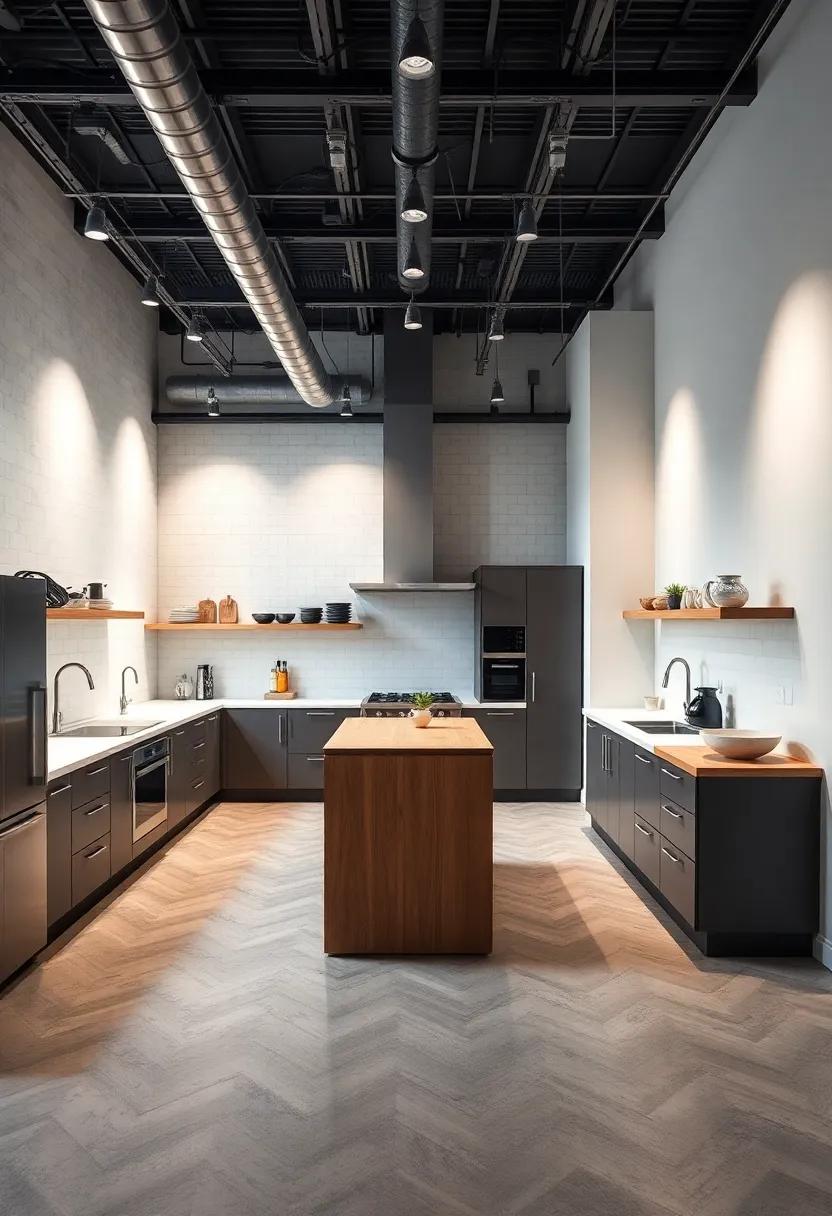
Designing an industrial kitchen involves a delicate interplay between aesthetics and functionality, where each element contributes to an overall atmosphere while also serving a practical purpose. Materials play a crucial role in this balance; stainless steel surfaces not only provide a modern and sleek appearance but also ensure durability and easy maintenance. Similarly, the lighting should enhance the kitchen’s appearance while being functional enough to illuminate workspaces effectively. Consider installing dimmable LED lights to adjust the ambiance according to the time of day or specific kitchen activities.
Creating a harmonious workspace requires careful layout planning. Here are key elements to consider:
- Ergonomics: Ensure that the kitchen workflow minimizes unnecessary movements.
- Storage Solutions: Use vertical space efficiently with shelving and racks that are both stylish and practical.
- Open Design: Promote visibility and collaboration by avoiding compartmentalized spaces.
Incorporating these visual and functional components allows for a seamless operation while creating an inviting atmosphere for both staff and customers. For more detailed insights on designing efficient industrial kitchens,you can visit Kitchen Retailer.
Creating Flexible Workspaces to Adapt to Varied Culinary needs
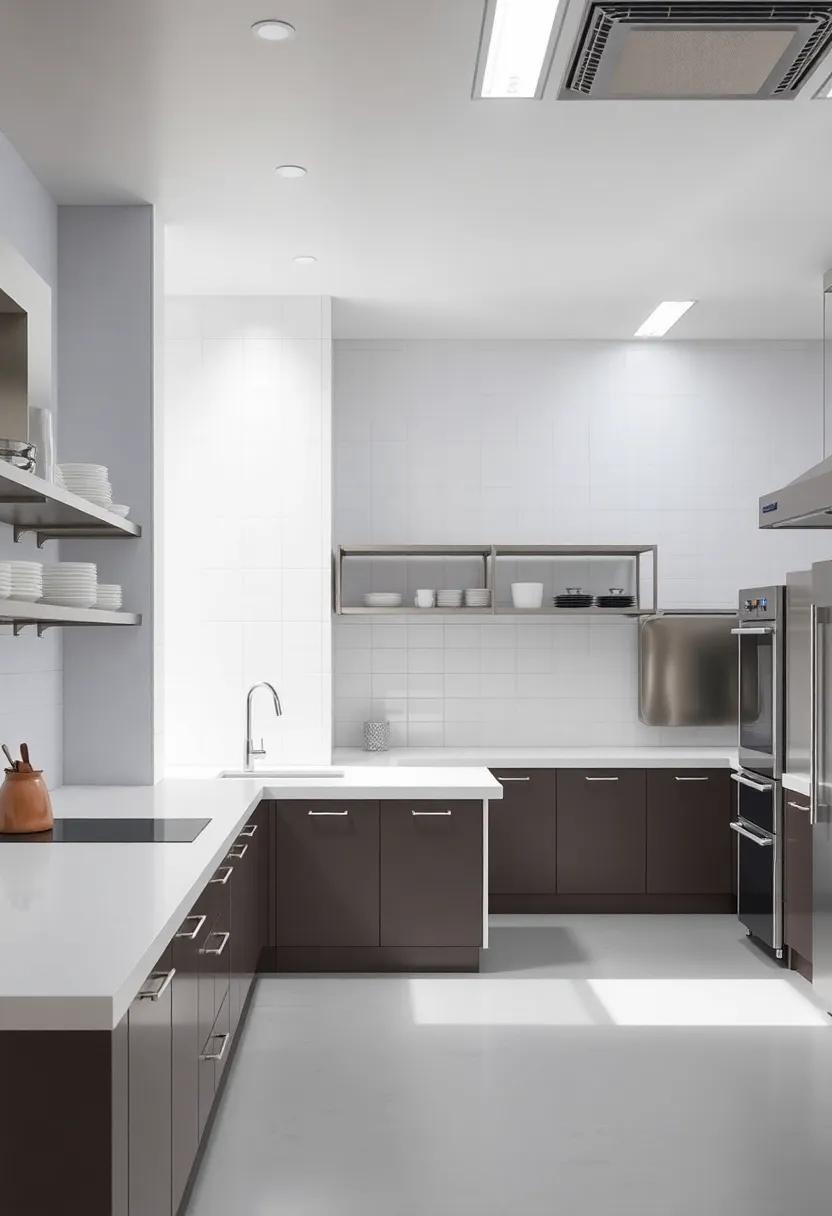
In the ever-evolving landscape of culinary operations, the demand for adaptable kitchen environments has never been more critical. By implementing flexible workspaces, establishments can cater to diverse culinary needs, whether for high-volume production or more intimate, specialized meals. Modular kitchen units and multi-functional stations enable chefs to switch from one task to another seamlessly, optimizing workflow and minimizing downtime. Essential to this flexibility is the strategic arrangement of equipment and supplies, allowing for easy transitions between different cooking styles, such as baking, grilling, or sous-vide.
To effectively design these dynamic environments,consider incorporating elements that enhance both efficiency and creativity. Creating dedicated zones for various cooking methods, such as a prep area, cooking station, and plating section, can streamline operations. Here are some key aspects to focus on:
- Adjustable surfaces for varying tasks
- Mobile carts for ingredient transportation
- Stackable storage solutions for easy organization
- Flexible seating arrangements for team collaboration
| Design Element | Benefit |
|---|---|
| Modular Workstations | Adapts to chef’s needs |
| Stainless Steel Surfaces | Durable and easy to clean |
| Smart Storage Solutions | Maximizes space efficiency |
Incorporating these elements not only enhances functionality but also fosters creativity within the team. As culinary trends continue to shift, staying informed about innovative workspace solutions can definitely help ensure that your kitchen remains at the forefront of efficiency and adaptability. For more insights on designing functional culinary spaces, visit Food Service Equipment journal.
Streamlining Raw Material Storage for Quick Access and Organization
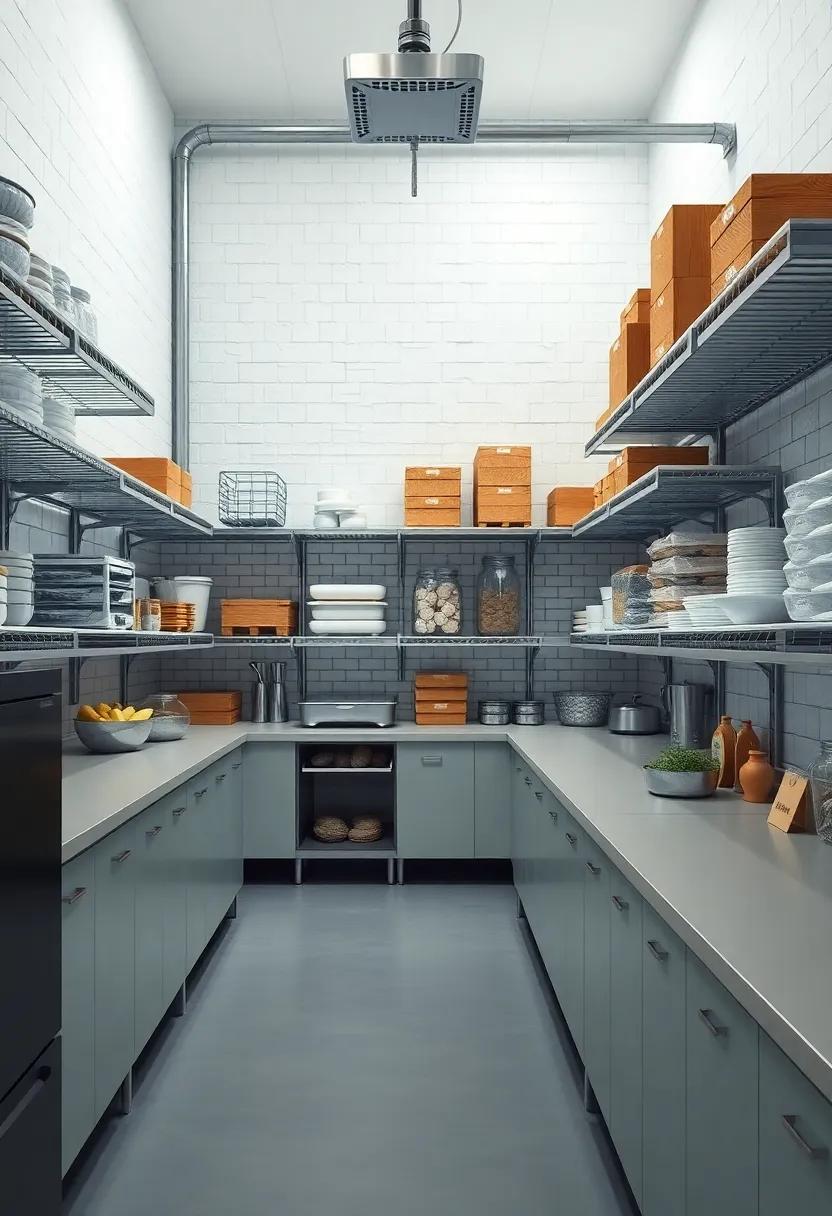
Efficient storage solutions are pivotal in an industrial kitchen setting, ensuring that raw materials are always within reach while maintaining an organized environment. Utilizing vertical storage can maximize space and streamline access. by incorporating shelving units and racks, operators can categorize ingredients according to type or use frequency, thereby reducing the time spent searching for items. These systems should be complemented by clear labeling and color-coded bins to facilitate quick identification, allowing chefs to focus on their culinary creativity rather than on locating supplies.
Additionally, a well-designed layout should incorporate mobile storage carts that can be easily moved to various stations. this further enhances accessibility and organization, creating a fluid transition from preparation to cooking. To support this, a simple inventory management system can be integrated, providing real-time tracking of supplies. Below is a summary of key features to consider for optimal raw material storage:
| Feature | Description |
|---|---|
| Vertical Storage | Maximizes space efficiently. |
| Labeling System | Ensures quick identification of ingredients. |
| Mobile Carts | Enhances accessibility and organization. |
| Inventory Management | Tracks supplies in real-time. |
By incorporating these strategies, industrial kitchens can not only save time but also improve overall workflow, making it easier for teams to achieve their culinary goals. For further insights on optimizing kitchen storage, consider visiting FoodServiceWarehouse.
Choosing the Right Kitchen Equipment Based on Your production Scale
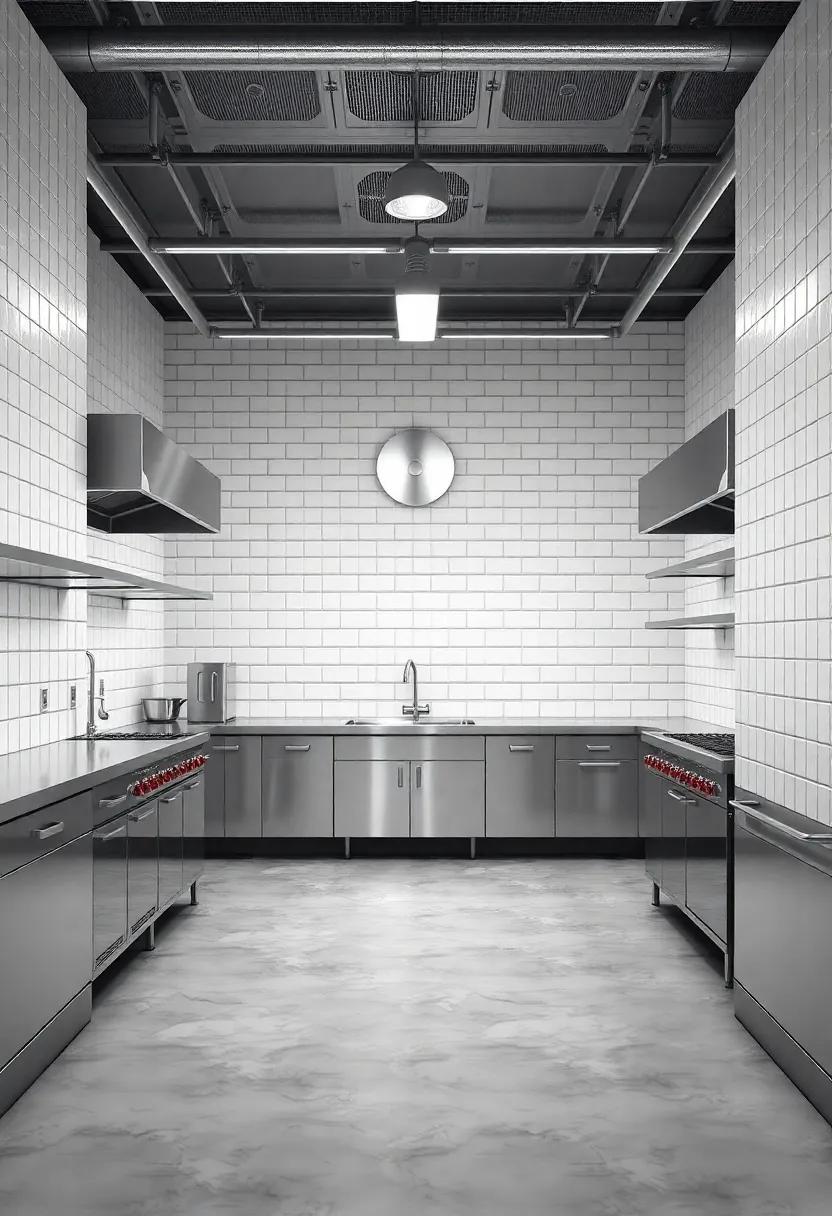
When outfitting an industrial kitchen, the scale of your operation plays a pivotal role in determining the type of equipment you should invest in.Small-scale operations, such as cafes and bakeries, often benefit from versatile appliances that save space while maximizing functionality. Consider introducing combination ovens or multi-use cooktops that can perform multiple tasks, from baking to sautéing. On the other hand, large-scale kitchens, like those in hotels and large restaurants, require heavy-duty appliances capable of high volume production. Here,commercial ranges,convection ovens,and floor mixers become essential tools to keep up with the pace.
Understanding your production needs is crucial when selecting kitchen equipment. Key factors to focus on include:
- Volume of food prepared - Estimate daily meals to gauge appropriate capacity.
- Flexible equipment – Invest in appliances with adaptive features to accommodate seasonality.
- Energy efficiency - Look for energy-saving equipment to reduce long-term costs.
| Equipment Type | Ideal For | Key Feature |
|---|---|---|
| Combination Oven | Small-scale operations | Space-saving |
| Commercial Range | Large-scale kitchens | High output |
| Floor Mixer | Bakeries | High-capacity mixing |
Moreover, investing in the right tools allows you to enhance workflow efficiency and maintain consistent food quality. Employing a mix of robust machinery for volume tasks alongside smaller, specialized tools for detail work can create a harmonious kitchen environment. To help you make informed decisions regarding equipment that best suits your operational needs, you can refer to trusted resources like Food Service Equipment Journal.
Implementing Smart Storage Solutions to Maximize Vertical Space
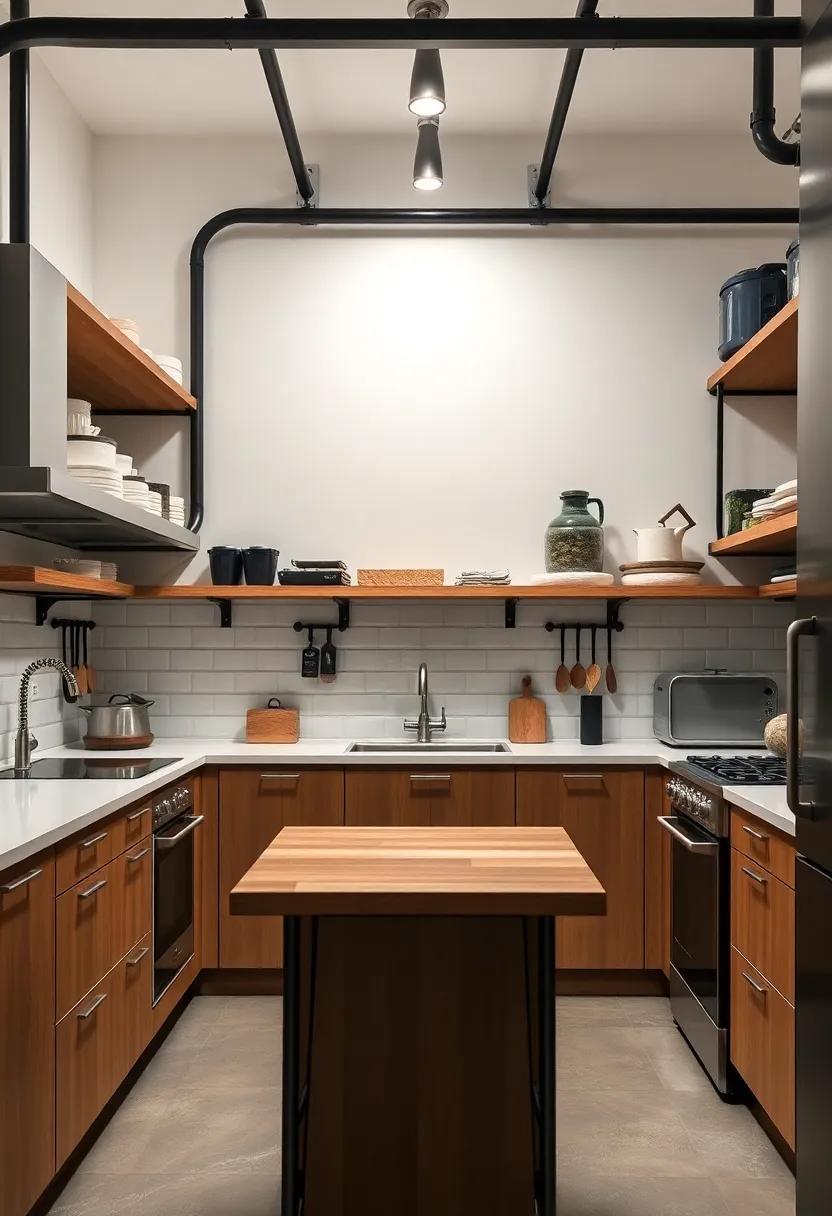
Maximizing vertical space in an industrial kitchen is imperative for enhancing efficiency and productivity. Creative use of wall-mounted solutions not only keeps essential tools accessible but also frees up much-needed counter space. Consider implementing open shelving for storing frequently used items, which allows for easy visibility and quick access. Other options like hanging pot racks or magnetic strips for knives can significantly reduce clutter while adding a touch of style. Here are some ideas to consider:
- utilize vertical racks for trays and pans.
- Install hooks or pegs for utensils and cookware.
- Employ multi-tiered shelving for dry storage.
Incorporating smart storage solutions such as sliding cabinets and pull-out shelves can enhance both accessibility and organization. Custom cabinetry that extends up to the ceiling or is designed specifically to store appliances can optimize every inch of available height. Additionally, incorporating a labeling system on shelves and containers can foster a more organized workspace. The following table outlines some innovative vertical storage solutions:
| Storage Solution | Benefits |
|---|---|
| Wall-mounted Shelves | Maximize space and enhance accessibility. |
| overhead Pot Racks | Free up counter space and add decor. |
| Hanging Magnetic Strips | Keep knives organized and within reach. |
Optimizing vertical space in industrial kitchens not only streamlines workflows but also inspires creativity and efficiency. For more ideas on space management and smart storage, you can explore resources from IKEA.
Ensuring Efficient Transportation of Goods Within the Kitchen Layout
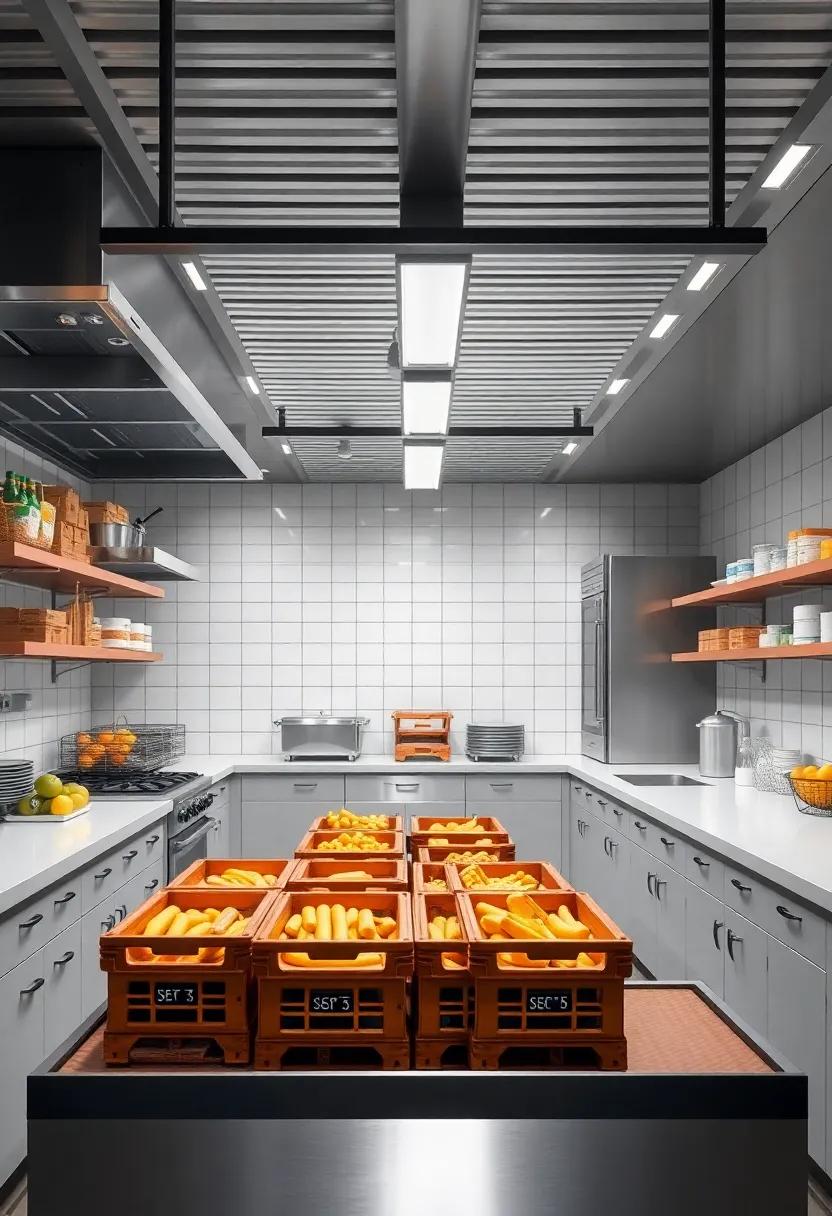
In the bustling environment of an industrial kitchen, the flow of goods is crucial for maintaining productivity and quality. A well-thought-out layout ensures that ingredients can be easily accessed and transported between various workstations. This involves strategically positioning storage areas, food prep zones, cooking stations, and dishwashing sections. Efficient pathways should be clear of obstacles to facilitate swift movement, while designating specific routes for different types of goods can minimize confusion and time wasted. Additionally, the use of carts and shelving systems can streamline the movement of supplies and finished products, making everything from stock replenishment to plating quicker and more efficient.
Consider utilizing a system of color-coded zones in the kitchen to further enhance the organization and movement of goods.For instance, assigning unique colors to different areas (e.g., prep, cooking, and cleaning) can definitely help staff quickly identify where certain tasks need to take place. Below is an example of how a simple color-coded scheme can be structured:
| Zone | Color | Description |
|---|---|---|
| Prep Area | Red | Where ingredients are prepared and organized. |
| Cooking station | Green | Designated area for cooking and assembly. |
| Cleaning Section | Blue | Equipment and dishwashing area. |
Implementing these strategies can significantly enhance the organization of your industrial kitchen. For more tips on optimizing kitchen workflows,explore resources at kitchenmagician.com.
Setting Up Proper Lighting to Enhance Productivity and Safety
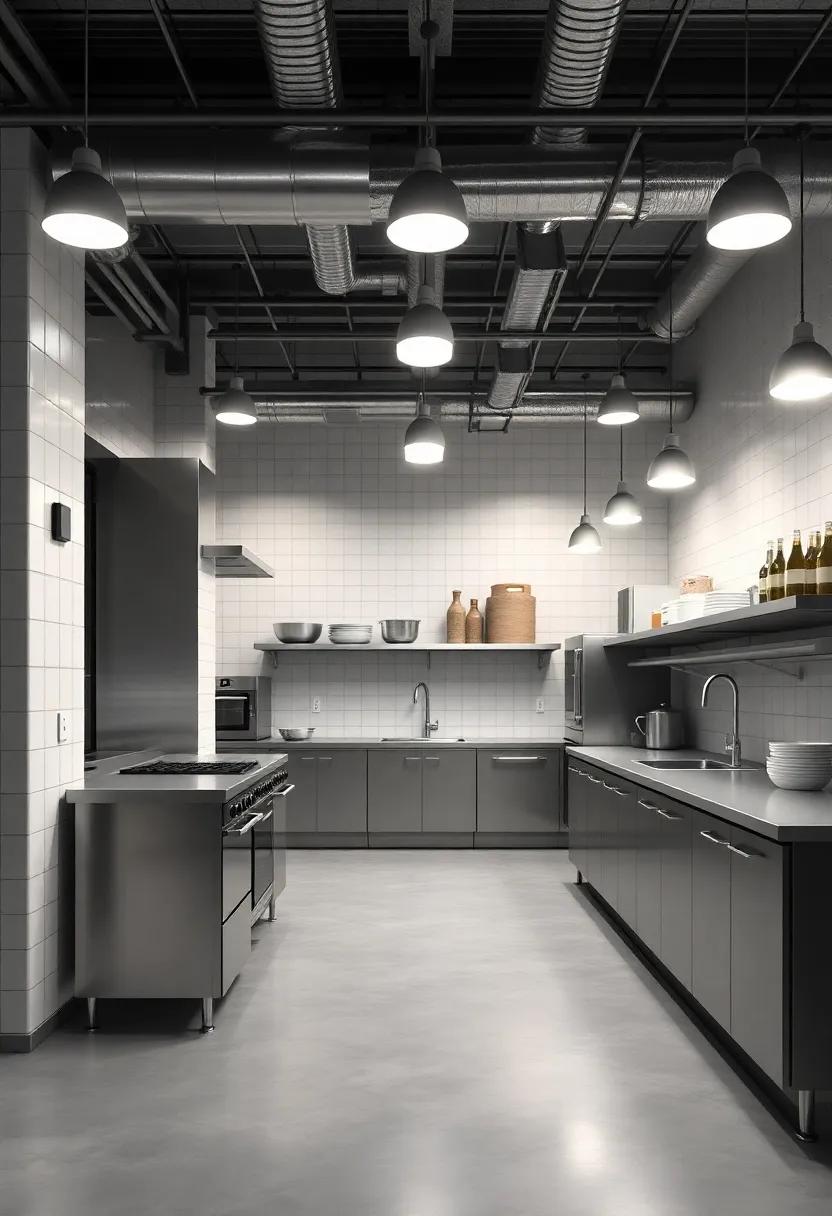
Proper lighting plays a critical role in an industrial kitchen, not only in enhancing productivity but also in ensuring safety for all staff members. To establish an effective lighting setup, it’s essential to consider a blend of natural and artificial sources. Utilizing radiant, white LED lights can significantly illuminate workstations, thereby reducing errors and improving the speed of food preparation. Moreover, incorporating adjustable lighting allows for focus on specific areas such as the cutting table or stove, where precision is paramount. Consider implementing the following types of lighting:
- Task Lighting: Directly illuminates work areas.
- Ambient Lighting: Provides overall illumination for the kitchen.
- accent Lighting: Highlights specific displays or equipment.
In addition to choosing the right types of lighting, it’s crucial to maintain a clean and clutter-free environment to avoid potential hazards. Light fixtures should be positioned in a way that minimizes shadows and glare, creating an environment where visibility is optimized. A well-lit kitchen not only fosters a more enjoyable workspace but also reduces the risk of accidents, allowing staff to focus on their tasks efficiently. Here’s a quick overview of recommended brightness levels for different kitchen tasks:
| Task | Recommended brightness (lux) |
|---|---|
| Food Prep | 400-750 |
| Cooking | 300-500 |
| Cleaning | 200-300 |
For in-depth insights on kitchen design and lighting productivity, consider visiting Acuity brands.
Facilitating Team Collaboration through Open Concept Kitchen Design
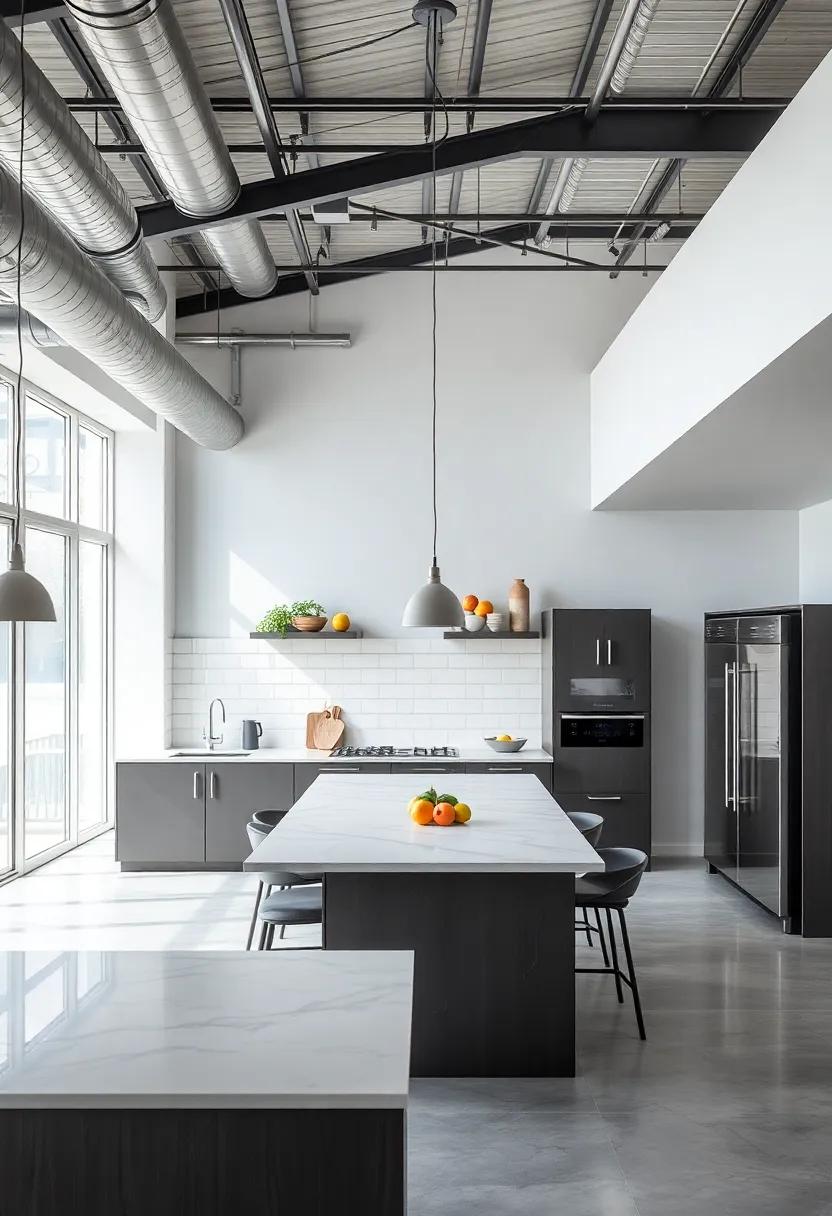
Open concept kitchen designs are revolutionizing the way teams collaborate in industrial settings.By removing barriers and creating a communal space,these layouts foster interaction,communication,and teamwork among kitchen staff. When chefs and kitchen personnel can easily see each other’s actions and engage in real-time discussions, the overall workflow dramatically improves. Essential decisions are made faster, contributing to more efficient meal preparation and service. This layout not only enhances productivity but also cultivates a sense of camaraderie among team members, leading to a happier and more motivated workforce.
To optimize team collaboration, consider incorporating the following features in your kitchen design:
- Flexible Workstations: Design areas that can be easily reconfigured based on the task at hand.
- Integrated Technology: Use screens and tablets to share real-time updates on orders and task assignments.
- communal Areas: Implement spaces for staff to interact during breaks to nurture relationships outside of work tasks.
Additionally, you can utilize acoustically absorbing materials to reduce noise levels in lively environments, allowing staff to communicate without raising their voices. By focusing on these elements, kitchens can promote a collaborative atmosphere that not only improves efficiency but also enhances the quality of the dishes prepared. For more on modern kitchen designs, check out ArchDaily.
Establishing Clear Pathways to Minimize Congestion and Enhance Flow
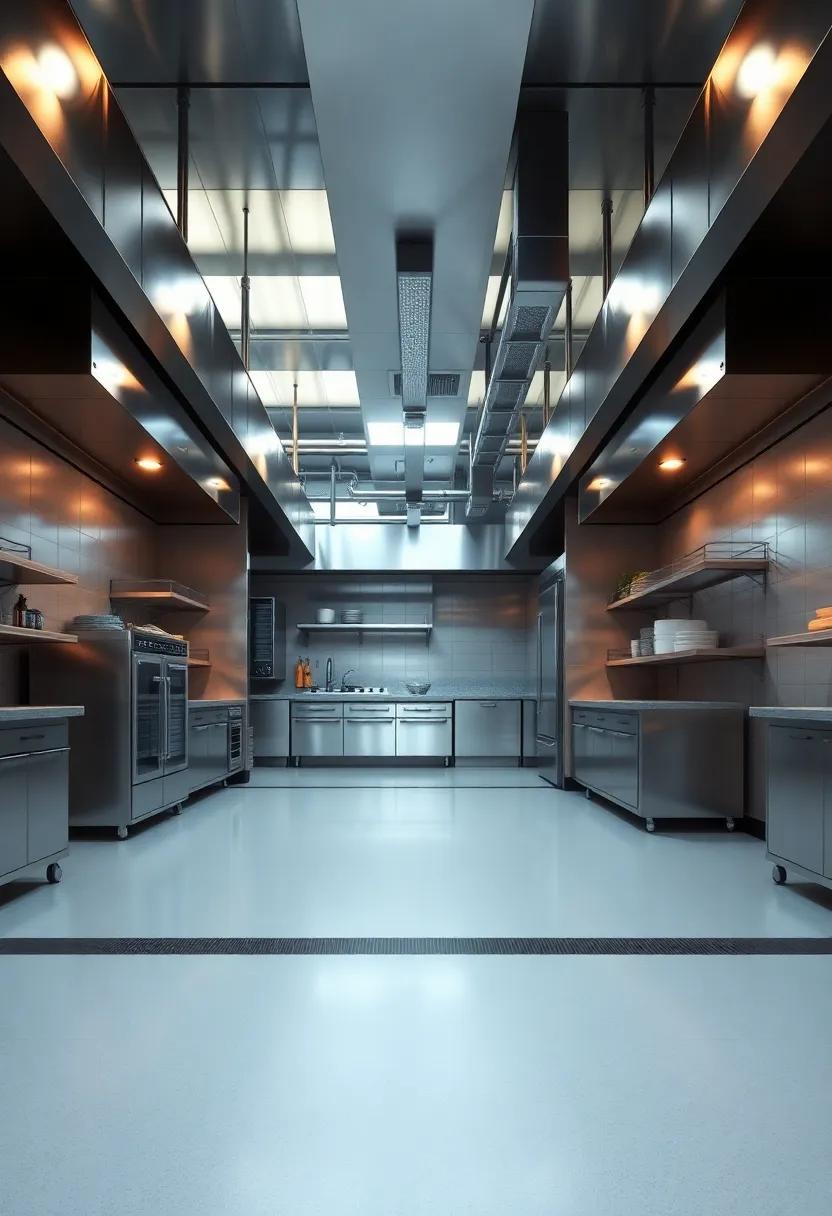
Designing an efficient industrial kitchen layout goes beyond mere aesthetics; it requires a strategic approach to workflow that minimizes congestion and promotes a seamless flow of operations. Start by evaluating the kitchen zones involved in your processes, such as preparation, cooking, plating, and serving. By clearly defining these areas and ensuring ample space between them, you create a natural progression for employees to follow. Utilizing tools such as color-coded floor markings or distinctive signage can further delineate pathways, guiding staff intuitively through the kitchen’s workflow.
Additionally, consider incorporating modular stations that can be tailored to specific tasks while promoting mobility and flexibility. Equipment placement should allow easy access to utilities and reduce the need for employees to navigate back and forth across workspaces. Regularly revisiting and optimizing these layouts based on staff feedback will help identify bottlenecks and improve overall efficiency. For more insights into optimizing kitchen flow, check out Food service Equipment Journal.
Enhancing Customer Experience with an Efficient Open Kitchen Concept
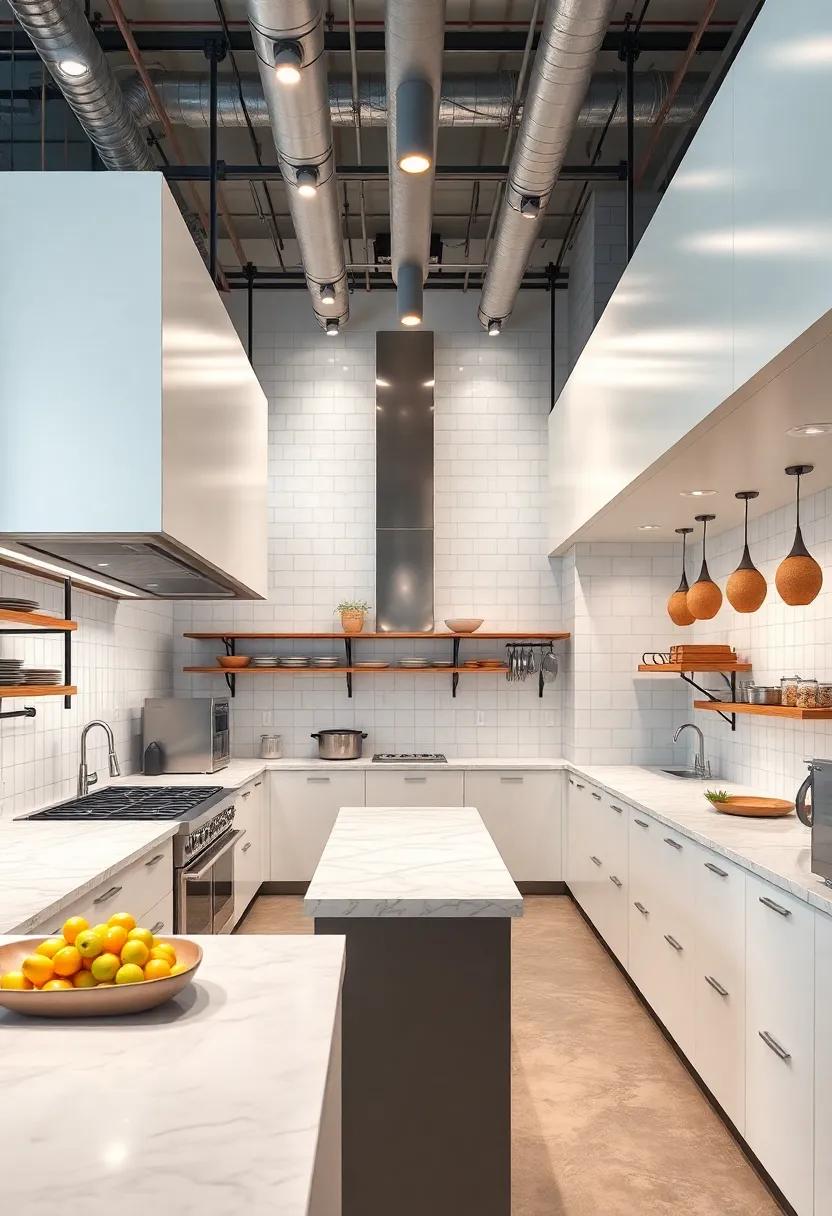
Adopting an open kitchen concept not only transforms the aesthetics of an establishment but also significantly enhances the customer experience. Diners appreciate transparency; seeing chefs at work fosters a connection that elevates their dining experience. Key elements of an efficient open kitchen can include:
- visibility: customers can see food preparation, which instills confidence in the quality and hygiene of the food.
- Interaction: Chefs can interact with diners, creating a vibrant atmosphere that encourages engagement.
- Design: A well-planned layout can minimize chaos and maximize workflow efficiency, showcasing culinary skills while maintaining speed in service.
Furthermore, integrating modern technology can streamline operations and enhance customer satisfaction. Advanced kitchen equipment not only reduces cooking times but also ensures consistency in food quality. A benefits table neatly summarizes the impact of an open kitchen:
| Benefit | Impact on Customer Experience |
|---|---|
| Transparency | Builds trust and reassurance |
| Engagement | creates memorable dining experiences |
| Efficiency | Reduces waiting times |
By thoughtfully incorporating an open kitchen layout, restaurants can create an environment that emphasizes quality and engagement, leading to higher customer satisfaction. For more insights on optimizing restaurant layouts, visit restaurant.org.
Employing Color Psychology to Influence Mood and Efficiency in Kitchens
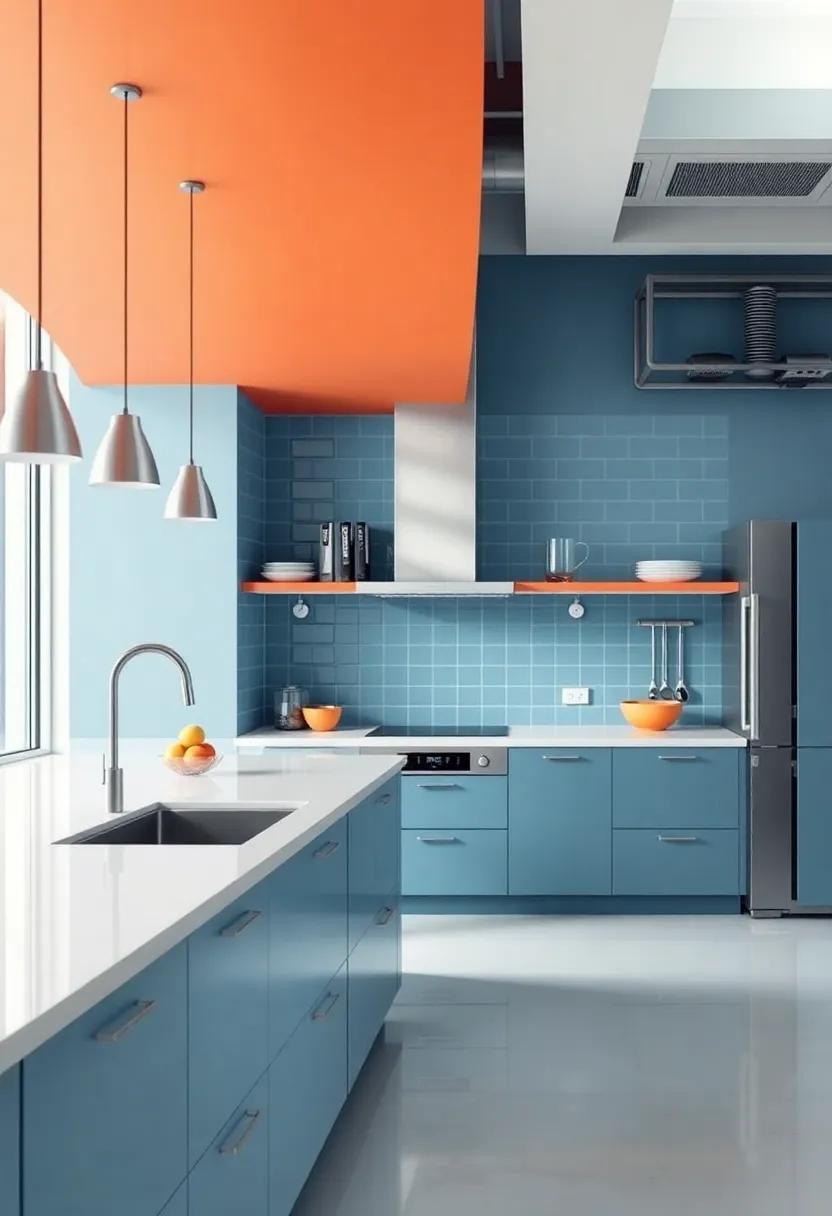
In the bustling environment of a kitchen, the choice of colors can significantly impact both the mood of the staff and their overall efficiency. Warm colors, such as red and orange, are known to stimulate appetite and energy, making them ideal for areas where food preparation occurs. These hues can encourage a lively atmosphere, making staff feel more engaged. On the other hand, cooler tones like blue and green can promote calmness and focus, essential for high-pressure tasks requiring precision. By strategically placing these colors around the kitchen—perhaps using red in a vibrant dining area and serene blues in prep zones—kitchen managers can create a balanced environment that fosters productivity without sacrificing the positive energy necessary for a busy service.
Additionally, incorporating color psychology into kitchen design can be effectively managed with the use of color-coded zones. This approach not only enhances aesthetic appeal but also can improve operational efficiency. A well-defined palette can create a clear visual hierarchy,helping staff quickly identify their specific stations.For example, a color palette table showcasing different zones might look like this:
| Zone | Color | Impact |
|---|---|---|
| Preparation Area | Green | Promotes focus and calm |
| Cooking Station | Red | Stimulates energy and urgency |
| Dining Area | Yellow | Encourages happiness and sociability |
Moreover, integrating materials that reflect these colors can enhance functionality while also uplifting spirits. By employing natural light, colorful accents, and thoughtful design, kitchen environments can be transformed into spaces not just for work but for creative culinary expression, ultimately reflecting the ethos of the establishment. For more insights on the psychology of colors, visit Color Psychology.
Incorporating Feedback Loops for Continuous Improvement in Operations
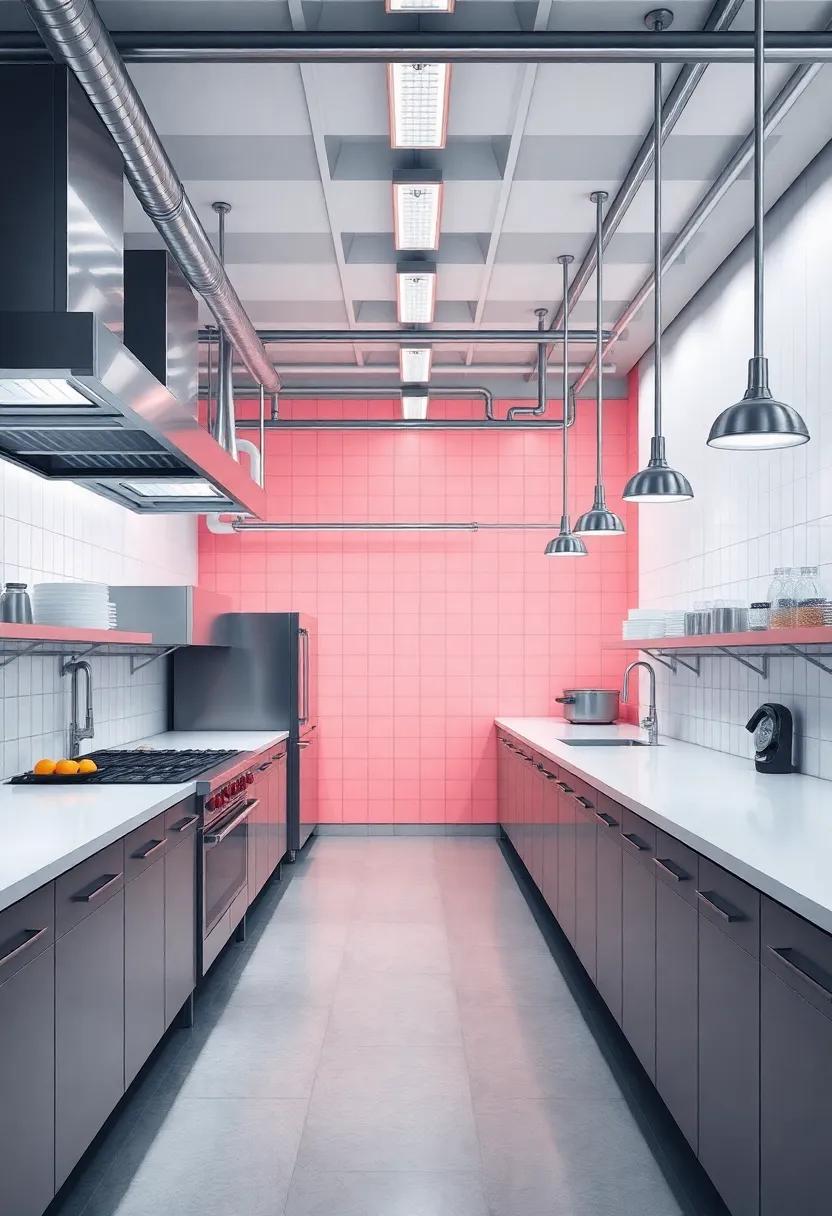
To streamline operations and optimize kitchen layouts, it’s essential to establish effective feedback loops that gather insights from all levels of staff. Implementing regular check-ins fosters an environment where culinary personnel can share their experiences and challenges related to the layout. Consider the following strategies:
- Encourage open communication through weekly team meetings.
- Utilize suggestion boxes for anonymous feedback.
- Conduct quarterly reviews to assess layout efficiency.
Moreover,leveraging data analytics can guide decision-making processes. By tracking key performance indicators (KPIs) such as food prep time, dish cleaning efficiency, and ingredient inventory turnover, kitchens can pinpoint areas that require improvement.Some important KPIs to consider include:
| Indicator | Measurement Method |
|---|---|
| Prep Time | Average time tracked per dish |
| cleaning Efficiency | Time taken from service end to clean finish |
| Inventory turnover | Frequency of restocking items |
Ultimately,the accumulation of feedback and analytics-driven decisions leads to a more adaptable kitchen layout that can evolve with changing needs. Emphasizing continuous improvement not only enhances operational workflow but also boosts staff morale and productivity. For further insights on process optimization, visit Industry Week.
Designing Zones for Specialty Cooking Techniques and Equipment
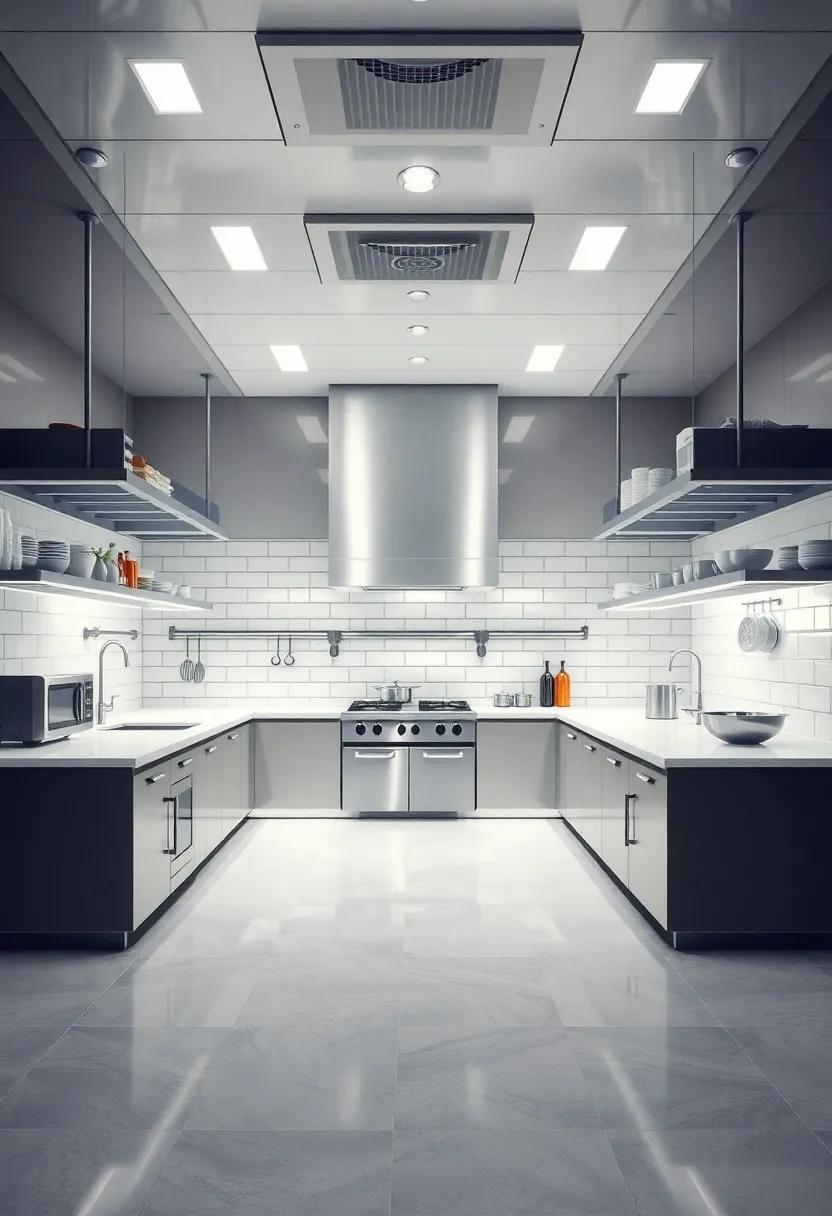
When designing an industrial kitchen, specific areas must be tailored to accommodate specialty cooking techniques and equipment. The layout should reflect the unique demands of each cooking style,ensuring that chefs can work efficiently without unnecessary interruptions. Consider incorporating dedicated zones for:
- Charbroiling and Grilling: A designated space with an exhaust hood to manage smoke and heat.
- Frying: A separate frying station with deep fryers that are easy to access and maintain.
- preparation: Ample counter space and storage for utensils, spices, and raw ingredients.
This segmentation not only enhances workflow but also facilitates safety practices by minimizing the risk of cross-contamination between raw and cooked foods.
Additionally, it’s crucial to integrate the safety protocols for each specialized zone. As an example, heat-resistant materials should be used in areas prone to high temperatures, and splash guards can be installed around frying stations to contain grease splatter. Creating a well-planned layout may involve detailed planning and a deep understanding of each cooking technique. Below is a quick reference table of essential equipment for various cooking styles:
| cooking Technique | Essential Equipment |
|---|---|
| Steaming | Steamers, Convection Ovens |
| Smoking | Smokers, Wood Chips |
| Bakery | Deck Ovens, proofers |
For more expertise in industrial kitchen design, you can explore resources at ChefStore.
The Conclusion
As we draw the curtain on our exploration of industrial kitchen layouts, it becomes clear that an efficient design goes far beyond mere aesthetics; it’s the backbone of a successful culinary operation. The meticulous planning of equipment placements, workflow optimizations, and dedicated spaces can transform a chaotic meal service into a symphony of culinary creation.
In crafting efficiency, we embrace not only the functional aspects of a kitchen but also the creativity and passion that fuels the industry.By understanding the nuances of layout principles—from the golden triangle of workflow to the importance of zoning—we empower chefs and kitchen managers to harness the true potential of their environments.
Ultimately, an intelligently designed kitchen is a canvas where culinary dreams come to life, facilitating innovation and artistry while ensuring that every dish tells a story of precision and grace.As you embark on your journey to design or revamp your industrial kitchen, remember that every square foot holds the promise of efficiency, collaboration, and creativity. Here’s to creating spaces that not only function flawlessly but inspire greatness in every dish served.
As an Amazon Associate I earn from qualifying purchases.
